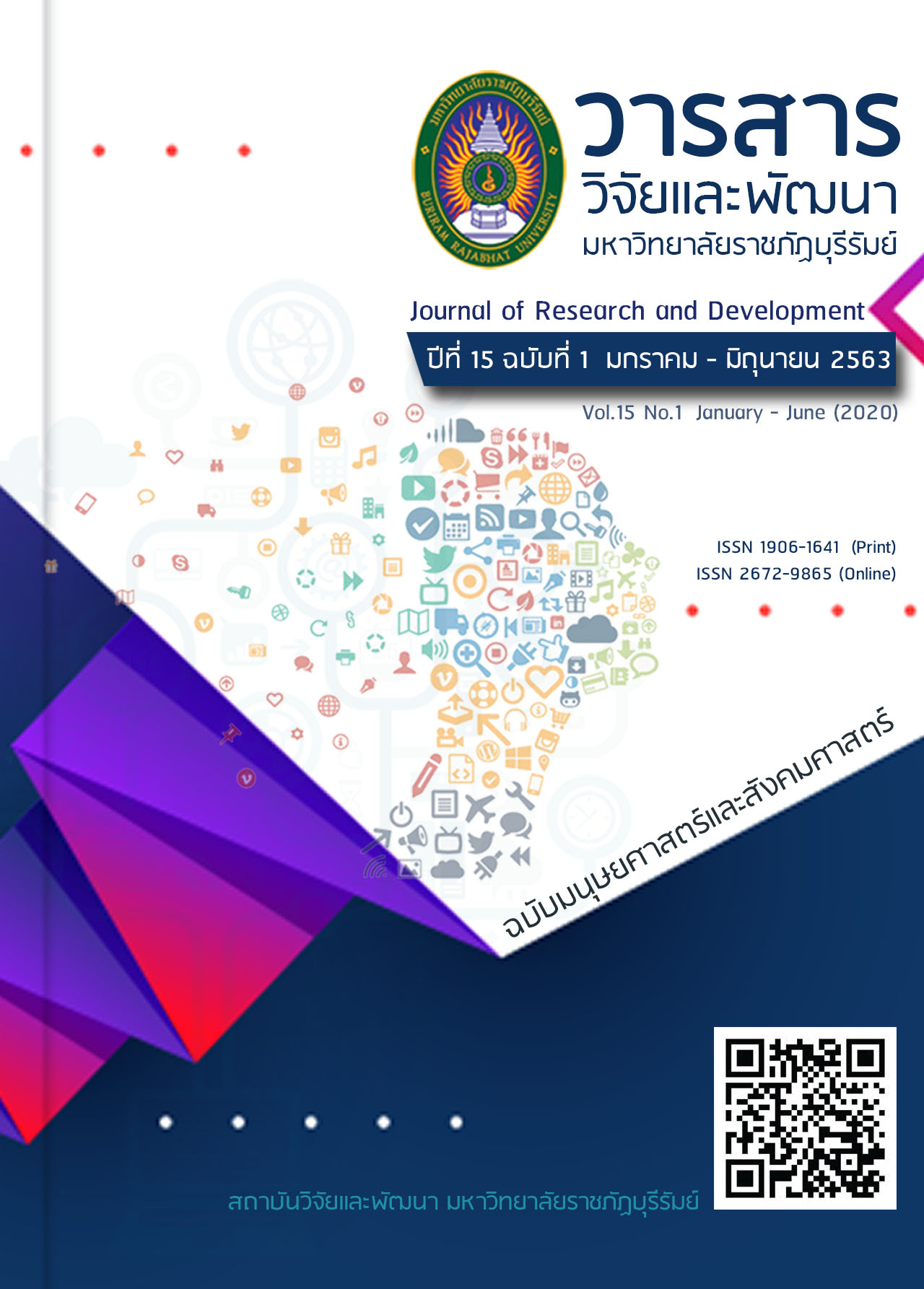Creating patterns of antique pottery products That is a kamphaeng Phet province
Main Article Content
Abstract
In this research, the objectives of the research are defined as 1) To study the pattern of pottery products in Kamphaeng Phet Province 2) To study the demand for antique pottery products as souvenirs in Kamphaeng Phet Province 3) To create antique pottery products by molding by water casting method. 4) To assess the format technology transfer pottery production process using water casting method. The samples are 10 experts the evaluator of the opinions of 21 antique pottery product designs, consisting of 50 people and 20 pottery trainees Tools used include Satisfaction questionnaire and the test of 15 items is an estimation scale with 5 levels the statistics used are frequency percent average standard deviation and variance analysis.
- 1. Results from the analysis of the pattern of pottery products Of Kamphaeng Phet province Found that 10 respondents males more than females accounted for 60 percent most 31-40 years old is have a bachelor degree with experience is 6-10 years at most and the level of demand for product development is equal to 50.00 percent, which is at a high level.
- 2. Results from the analysis according to objective no. 2 to study the demand for antique pottery products as souvenirs in Kamphaeng Phet Province. Found that 21 pottery styles that were evaluated in order to measure the highest level of needs are format 1 is followed by Form 13 and Form 14
- 3. The results of the analysis of the construction of antique pottery products by molding by water casting method Found that considering each of 4 aspects, in descending order from the most to the least, namely The product is beautiful and has a value ( =4.75 D. = 0.43) at a high level. Next is the product thickness value ( =4.30 S.D. = 0.64) And the weight of the product is ( =4.30 S.D. = 0.56).
4. Results of analysis, evaluation of technology transfer pattern, pottery production process By molding by water casting method found that The total of 20 participants before the training had knowledge () = 22.33 percent and after training, knowledge, mean () percent = 73.66 Progressive, mean () = 51.33, (S.D.) = 19.49, (t-test) = 35.86 Which are significantly different at the .05 level
Article Details
เนื่อหาและข้อมูลในบทความ เป็นความรับผิดชอบของผุ้แต่ง
บทความในวารสารเป็นลิขสิทธิ์ของวารสารวิจัยและพัฒนา มหาวิทยาลัยราชภัฏบุรีรัมย์
References
จำเริญ เชื้อประดิษฐ์. (2551). เรื่อง หลักสูตรการทำเครื่องปั้นดินเผาพื้นบ้านทุ่งหลวงรายวิชาเพิ่มเติมกลุ่มสาระการเรียนรู้การงานอาชีพและเทคโนโลยี สำหรับนักเรียนชั้นมัธยมศึกษาปีที่ 3 .
ชัชวาลย์รัตนพันธุ์ สมบูรณ์สารสิทธิ์ และปรีชา อมรรัตน์. (2553). การออกแบบผลิตภัณฑ์โคมไฟที่มีแนวความคิดจากการบูรณาการเครื่องปั้นดินเผา กับศิลปะการแกะหนังตะลุง. นครศรีธรรมราช. มหาวิทยาลัยราชภัฏนครศรีธรรมราช.
พวงรัตน์ ทวีรัตน์. (2543). วิธีวิจัยทางพฤติกรรมศาสตร์และสังคมศาสตร์. พิมพ์ครั้งที่ 8. กรุงเทพฯ: จุฬาลงกรณ์มหาวิทยาลัย.
กำแพงเพชร: คณะเทคโนโลยีอุตสาหกรรม มหาวิทยาลัยราชภัฏกำแพงเพชร.
พีรพงษ์ พันธะศรี. (2561). เครื่องปั้นดินเผาสร้างสรรค์ : กรณีศึกษาเครื่องปั้นดินเผาประกอบไม้ยางพารา และในจังหวัดสงขลา.สงขลา.: มหาวิทยาลัยสงขลา.
ไพเวช วังบอน. (2551). หลักสูตรการอบรม โครงการพัฒนาบุคลากรด้านผลิตภัณฑ์และบรรจุภัณฑ์. กรุงเทพฯ. ส่งเสริมอุตสาหกรรม.
ล้วน สายยศ และอังคณา สายยศ. (2539). หลักการสร้างแบบทดสอบความถนัดทางการเรียน.(พิมพ์ครั้งที่ 5) กรุงเทพฯ: วัฒนาพานิช.
สุจิรา ร่มโพธิ์. (2553). การศึกษาอัตราส่วนผสมของวัตถุดิบสำหรับนำมาใช้ในงานประติมากรรม.
กำแพงเพชร: คณะเทคโนโลยีอุตสาหกรรม มหาวิทยาลัยราชภัฏกำแพงเพชร.
Andrews, A.l. (1957). Ceramic Test and Calculation. New York: John Milley and Sons.
Nishimura, O. (1978). Technology Testing for Ceramics. Products in Ceramic Engineering Nagoya : Nagoya Internation Training Center.

